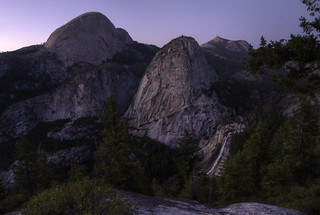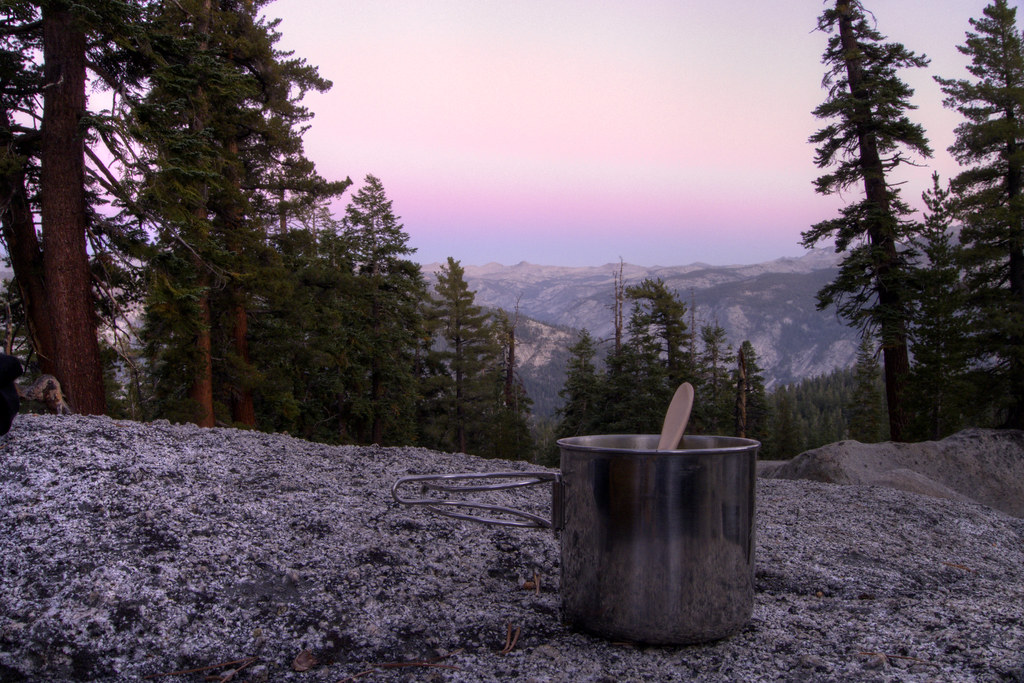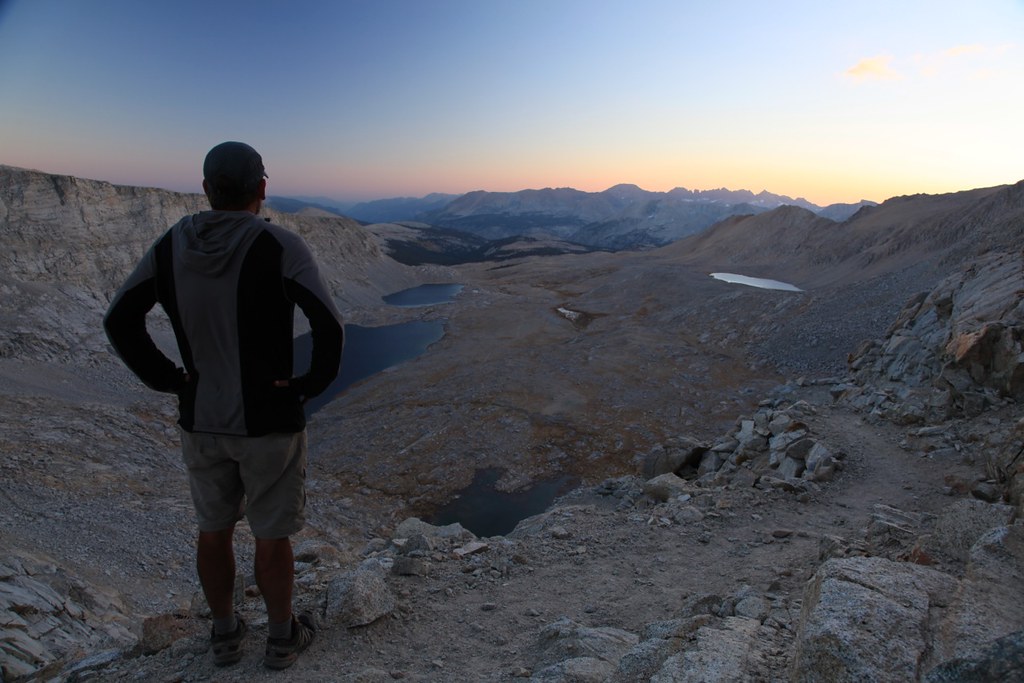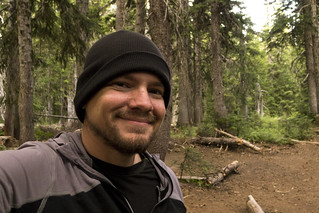 This is a guest post by Nature Photographer and Cinematographer, Jeremy Evans, www.evansdp.com.
This is a guest post by Nature Photographer and Cinematographer, Jeremy Evans, www.evansdp.com.
---
Night and Low Light Photography can open doors to lots of exciting photographic opportunities. I always say, “why put the camera away after dark”. Night photography can add a new dimension to your landscape. It can also add a “new look” to popular locations and landscapes. Equipment:
Equipment:The three things you need to take quality photos at night are a sturdy tripod, a camera with manual control, and above all patience. You don’t need a top of the line SLR or even a digital camera. I still get as good if not better results using film. If you don’t have a digital camera with manual functions and you want to experiment with night photography there’re many good manual film SLRs you can get used for very cheap. I recommend a Canon A-1 or F-1. They are both fully manual. These can be found used on eBay for under $500.00 The F-1 is better because it does not require a battery to keep the shutter open. The A-1 or any digital camera will eventually lose battery power if you are doing extremely long exposures. There are also many good Point and Shoot (POS) cameras on the market with manual control but most don’t have a “B’ or “Bulb” option thus limiting you to 30 seconds exposures. I recommend the Canon G series POS cameras if you don’t want to use a DSLR.
These techniques apply both to film and digital. The benefits of film over digital are longer exposures and no rendering time. The disadvantage is processing cost and no immediate results to looks at in the field.
Most digital camera sensors produce noise after about 5-10 seconds. Film does not have this problem. With a manual film camera you can leave the shutter open all night and the only problem you have is slight color shifting. When using digital I recommend turning on your “long exposure noise reduction” setting if you have one. This is what your rendering time is. If you don’t have this feature on your DSLR or POS camera then you can remove some of the noise later in Photoshop. Digital cameras will also produce red and blue pixels on long exposures. Some camera’s noise reduction feature will remove this as well. The problem is the rendering time on the newest most advanced camera is still 5-10 minute per image and even longer depending on how long your exposure is. For example I use a Canon 5D Mark II and I have to wait as least 2-5 minutes for it to render a single image. One important note when your camera is rendering is not to power off or change batteries if you fear it will run out. If your camera looses power your image will be lost.
If your camera has a “mirror lock up” feature turn that on too. This will reduce camera vibration when the shutter opens but keep in mind you will have to press the shutter button twice on some cameras, once to lock up the mirror and again to open the shutter.
Techniques in the field:
Now that you know all the technical mumbo jumbo lets go try it! To start off I recommend photographing on a full moon night or at least 3 days before or after a full moon. This will help you see the landscape and get used to the process. By using a red flashlight or headlamp over a traditional light will allow your eyes to fully adjust to the darkness and you will be able to see what you are photographing beforehand. You can also use a flashlight to illuminate objects in the foreground.
The moon is just like the sun. It’s reflected sunlight and it works the same way, you just need more exposure time. The moon’s color temperature is a little warmer than direct sunlight. Daylight is 5600 degrees Kelvin. (56K) I still recommend using daylight balanced film. With digital you can play around with your color temp a little. I like to set mine to 4700K at night. Lower Isis will give you an orange image and higher ones will make the image too blue or green. With film I used Fuji Velvia 100 speed daylight slide film. Set your camera to 100 ISO and shutter to B or Bulb. It helps to have a stopwatch or a remote control with a timer you can set. The remote control or basic cable release will also prevent any camera shaking and blurry images.
 The faster the lens you have will shorten your exposure times and in turn reducing your noise with digital. I recommend a lens in the f1.4-f2.8 area. However these lenses are more money. Turn OFF the auto focus on the lens and if it has an image stabilizer feature turn that OFF as well. Otherwise the moving sky will confuse your lens and give you a “ghosting” effect.
The faster the lens you have will shorten your exposure times and in turn reducing your noise with digital. I recommend a lens in the f1.4-f2.8 area. However these lenses are more money. Turn OFF the auto focus on the lens and if it has an image stabilizer feature turn that OFF as well. Otherwise the moving sky will confuse your lens and give you a “ghosting” effect.I base my exposure times on a table I used in my head that I memorized when I was using only film. Under a bright moon I do 4 min at f4. You can bracket in either direction to adjust your exposure times and maintain the same image quality. For example if you want brighter stars or trails then go to 8 min at f8 or for less trails 2 min at f2.8 or 1 min at f1.4.
 If you prefer deeper richer stars in the sky then I suggest photographing on a moonless night. You will even see the Milky Way but your foreground landscape will be dark. When doing this you need to set your ISO around 1600-3200. 800 will work if you have an f1.4-f1.8 lens. On a bright moon night the landscape will be fully exposed just like in the day but give you stars in the sky.
If you prefer deeper richer stars in the sky then I suggest photographing on a moonless night. You will even see the Milky Way but your foreground landscape will be dark. When doing this you need to set your ISO around 1600-3200. 800 will work if you have an f1.4-f1.8 lens. On a bright moon night the landscape will be fully exposed just like in the day but give you stars in the sky.For these deeper moonless night landscapes set your camera to 30-90 seconds and set your lens to the widest aperture you have. Usually 60 seconds at f4 or 2.8 will give you a great night sky. This is where you get the noise and red/blue pixels. If you don’t want star trails then I suggest keeping your exposure under 90 seconds. After that you will start to see star trails. If you want a good star trail photo then drop your ISO down to 100, and expose for at least 2 hours. This is where some digital camera batteries will die. If they don’t die during the exposure time then it might during rendering time. It’s good to have a least 4 camera batteries and use a fresh one for each long exposure. I’ve often used up to 6 batteries in one night. That’s when my Canon F-1 comes in handy, no battery so the shutter will stay open as long as you like.
Above all have fun and dress warm on those colder nights. It gets pretty cold standing around in the dark for hours and hours.
Many more examples can be seen on my website at www.evansdp.com.


com-s.jpg)
com-s.jpg)
com-s.jpg)
com-s.jpg)






